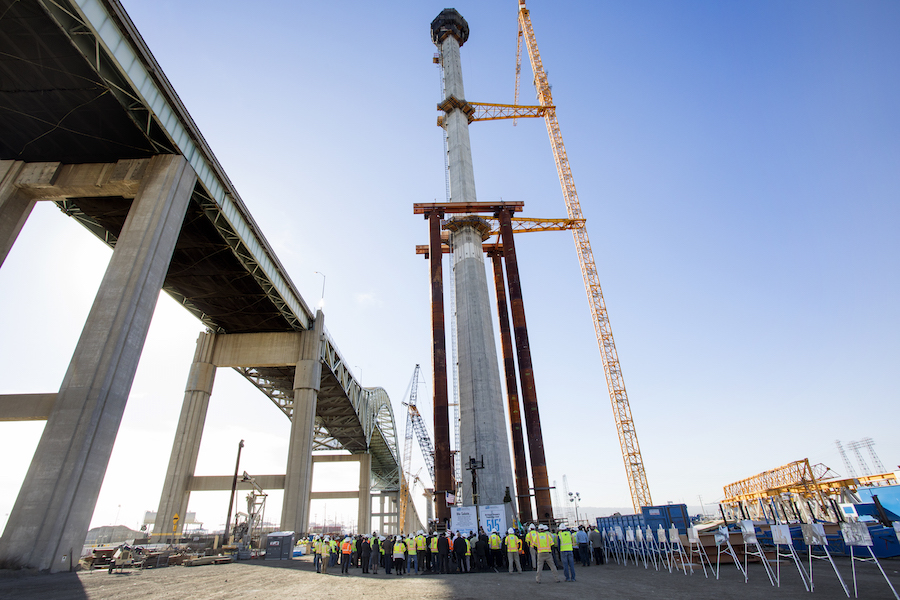
Two 515-feet columns will hold up the new Gerald Desmond Bridge when it opens in 2019. Photo: Courtesy Port of Long Beach
While the new Gerald Desmond Bridge won’t be completed until 2019 it did reach a milestone Tuesday when a large group of city and port officials and dignitaries gathered for the “Topping Out” ceremony to celebrate the completion of the two tallest towers that will hold up the structure.
At 515 feet tall, the towers are the tallest structures in the City of Long Beach. Straddling the port’s back channel, the two towers will prop up the bridge high enough to allow for larger ships to enter into the port complex. Once completed, the new Gerald Desmond Bridge will not only be one of the tallest of its kind in the country, it will also be California’s first cable-stayed bridge for vehicular traffic.
“These new towers reaching over 500 feet into the air are changing the Long Beach skyline,” said Mayor Robert Garcia in a statement. “The bridge is not only an important piece of infrastructure, its design will create a new iconic gateway into our city.”
Stayed cable bridges are often seen as faster to build and more cost effective as they use less material and can be built in less time. They differ from cable suspension bridges—think Golden Gate Bridge—in look but also design as the cable stayed bridges are generally more stiff than suspension bridges, offering more protections against deformations when loads are moving across them.
Today we celebrated a milestone in the construction of the new Gerald Desmond Bridge, as the towers top-out at 515 feet! pic.twitter.com/vkmNHIcQ0T
— Long Beach Mayor (@LongBeachMayor) December 5, 2017
The new bridge will also be significantly higher.
In side-by-side renderings released in 2015 the replacement Gerald Desmond is shown to offer about 50 feet more clearance to future ships. It will also include six lanes of traffic, emergency shoulders in each direction as well as pedestrian walkways and bike paths. The bridge is the most prominent point of entry to the city’s downtown corridor from the west as it links the city to the port complex and to neighboring cities including Wilmington and San Pedro.
The $1.47 billion bridge project has been a joint effort by CalTrans and the Port with funding support from agencies like the United States Department of Transportation and the Los Angeles County Metropolitan Authority (Metro). Now that the towers are completed the next step will be the completion of the main span of the bridge before it eventually opens in 2019.
“This bridge will be a lifeline for California’s economy as 40 percent of the nation’s imports come through this complex,” said Caltrans Director Malcolm Dougherty in a statement. “Congratulations to the Port of Long Beach for reaching the final stretch of completing this iconic bridge.”

